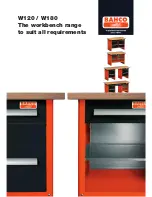
Seagate Exos X18 SAS Product Manual, Rev. D
21
www.seagate.com
Reliability specifications
5.2.5.2.4
Log page entries
When the drive begins DST, it creates a new entry in the Self-test Results Log page. The new entry is created by inserting a new self-test parameter
block at the beginning of the self-test results log parameter section of the log page. Existing data will be moved to make room for the new
parameter block. The drive reports 20 parameter blocks in the log page. If there are more than 20 parameter blocks, the least recent parameter
block will be deleted. The new parameter block will be initialized as follows:
1. The Function Code field is set to the same value as sent in the DST command
2. The Self-Test Results Value field is set to Fh
3. The drive will store the log page to non-volatile memory
After a self-test is complete or has been aborted, the drive updates the Self-Test Results Value field in its Self-Test Results Log page in non-volatile
memory. The host may use Log Sense to read the results from up to the last 20 self-tests performed by the drive. The self-test results value is a 4-
bit field that reports the results of the test. If the field is set to zero, the drive passed with no errors detected by the DST. If the field is not set to
zero, the test failed for the reason reported in the field.
The drive will report the failure condition and LBA (if applicable) in the Self-test Results Log parameter. The Sense key, ASC, ASCQ, and FRU are
used to report the failure condition.
5.2.5.2.5
Abort
There are several ways to abort a diagnostic. Users can use a SCSI Bus Reset or a Bus Device Reset message to abort the diagnostic.
Users can abort a DST executing in background mode by using the abort code in the DST Function Code field. This will cause a 01 (self-test
aborted by the application client) code to appear in the self-test results values log. All other abort mechanisms will be reported as a 02 (self-test
routine was interrupted by a reset condition).
5.2.6
Product warranty
See “Seagate® Technology Support Services” on page 5
for warranty contact information.
Shipping
When transporting or shipping a drive, use only a Seagate-approved container. Keep the original box. Seagate approved containers are easily
identified by the Seagate Approved Package label. Shipping a drive in a non-approved container voids the drive warranty.
Seagate repair centers may refuse receipt of components improperly packaged or obviously damaged in transit. Contact the authorized Seagate
distributor to purchase additional boxes. Seagate recommends shipping by an air-ride carrier experienced in handling computer equipment.
Storage
Maximum storage periods are 180 days within original unopened Seagate shipping package or 60 days unpackaged within the defined non-
operating limits (refer to environmental section in this manual). Storage can be extended to 1 year packaged or unpackaged under optimal
environmental conditions (25°C, <40% relative humidity non-condensing, and non-corrosive environment). During any storage period the drive
non-operational temperature, humidity, wet bulb, atmospheric conditions, shock, vibration, magnetic and electrical field specifications should be
followed.
Product repair and return information
Seagate customer service centers are the only facilities authorized to service Seagate drives. Seagate does not sanction any third-party repair
facilities. Any unauthorized repair or tampering with the factory seal voids the warranty.
















































